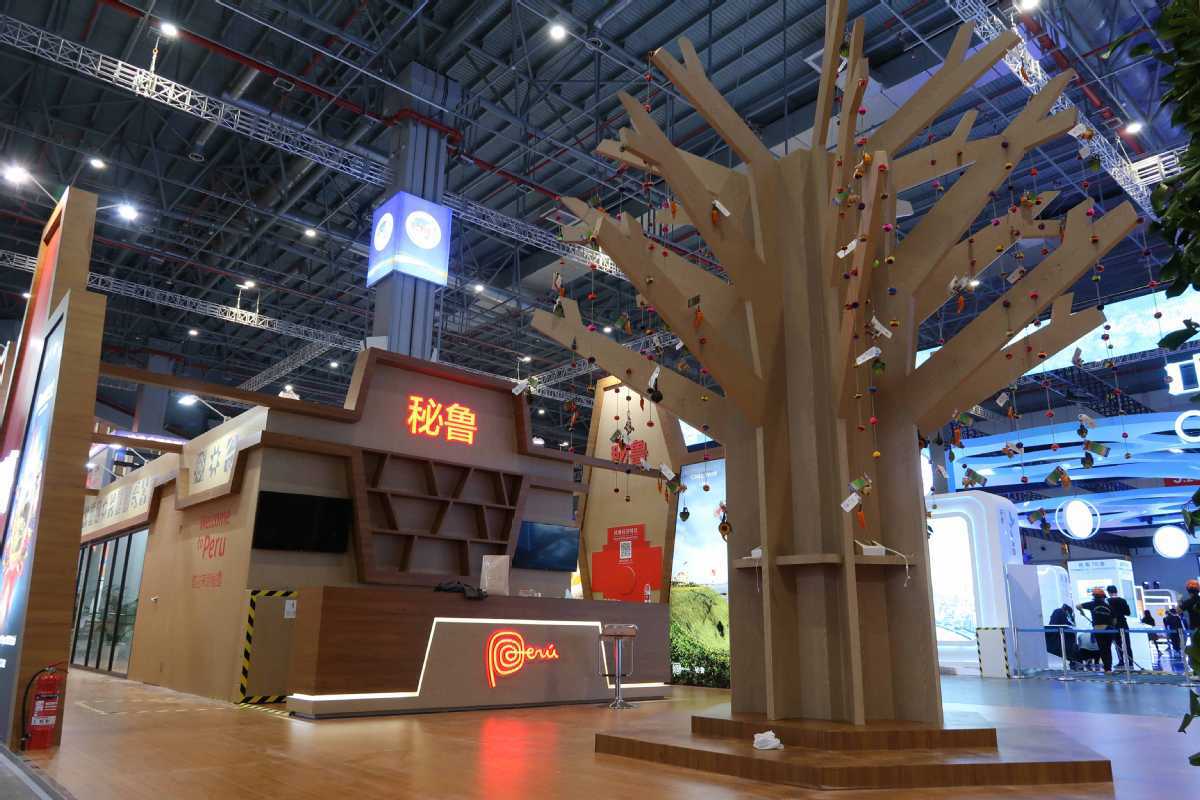Peru well positioned to be an international trade hub
By Rosario Santa Gadea | China Daily Global | Updated: 2019-12-11 10:11

With Peru and China signing the memorandum of understanding on cooperation within the framework of the Belt and Road Initiative on April 25, it is time to define our vision and implementation strategy.
The BRI, proposed by President Xi Jinping in 2013, comprises the Silk Road Economic Belt and the 21st Century Maritime Silk Road. The number of countries participating has risen to 136 this year.
As for the countries of Latin America and the Caribbean, Panama was the first to join in November 2017. In January 2018, the second ministerial meeting of the China-Community of Latin American and Caribbean States Forum was held in Chile, during which a special declaration on the initiative was approved. Also that year, 15 countries from the region signed agreements with China on the BRI; currently there are 19.
So far, the routes designed in this initiative make up six economic corridors under construction to link China with the rest of Asia and Europe. The key concept for understanding the BRI is that the economic corridors not only involve infrastructure (transportation, energy and communications), but also production, to facilitate participation in global value chains.
It is often thought that the BRI is merely a plan for China to invest in infrastructure in other countries. In reality, it is a comprehensive program of economic integration with five pillars: coordination of development policies, investment in infrastructure for connectivity, trade liberalization, financial integration and development of people-to-people links. Therefore, designing an efficient national strategy to take advantage of the opportunities the BRI can offer must be based on a correct understanding of what the initiative is.
Our involvement in the BRI should not necessarily be related to the entire national infrastructure gap. Considering that the basis of the initiative is connectivity with China, the focus should be on developing infrastructure projects that have an impact on transpacific relations.
In this sense, the enlargement of the BRI to Latin America implies, in reality, the extension to the Pacific of the 21st Century Maritime Silk Road.
Peru is located at the center of the Pacific coast of South America, allowing the country to become a hub of international trade between the two sides of the Pacific basin and, in particular, between China and South America.
Studies of the design and eventual implementation of a transpacific economic corridor within the framework of the BRI should include direct maritime connection, logistical costs, travel time and frequency of ships. Moreover, the most efficient land connections to reach the ports should be considered. Air connectivity should also be promoted.
On the other hand, there is the issue of digital connectivity. The BRI contemplates the construction of cross-border and intercontinental submarine optical cable projects that would form the "Information Silk Road".
Latin America has no direct connection with Asia for the transmission of information and data. Is a direct submarine cable between South America and China feasible? Where could the digital hub be located? Chile is already carrying out a feasibility study for the project. However, it is worth asking if Peru could also be an option.
In sum, the extension of the BRI to Latin America should involve working toward establishment of one or more transpacific economic corridors. Peru could be the anchor for such a corridor not only because of its geographical location, but also because of its relations with China.
In effect, Peru has with China a comprehensive strategic partnership, a free trade agreement and now the memorandum of understanding on the BRI. On the other hand, the country is a prospective member of the Asian Infrastructure Investment Bank. Likewise, Peru is the second destination of Chinese direct investment in Latin America (after Brazil), China's third trading partner in South America (after Brazil and Chile) and has the largest community of Chinese immigrants in Latin America.
The challenge for Peru is to continue growing through increased productivity and competitiveness. For that, infrastructure is necessary. The Peru-China agenda could be enriched with these issues, but within a clear strategy, to be designed, on the viability and benefits that a transpacific economic corridor could have.
The BRI should be understood in the context of restructuring of the Chinese economy. This means relocating industries to other countries. It is therefore based on investments in infrastructure for connectivity and, at the same time, delocalization of production. In this sense, the BRI is compatible with the globalization of value chains in which Peru aspires to participate.
The question is how these concepts could be introduced into transpacific relations. In doing so, we may have the opportunity to significantly renew the still traditional pattern of our economic relations with China, which are mainly focused on exporting raw materials and investing in extractive industries despite recent important progress in other sectors. In order to do that, the government, business and academia from both sides must cooperate with a long-term vision.
The author is director of the Center for China and Asia-Pacific Studies at the University of the Pacific in Lima, Peru. The views do not necessarily reflect those of China Daily.
























